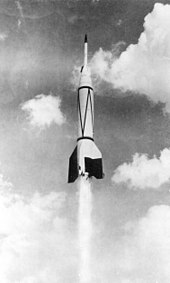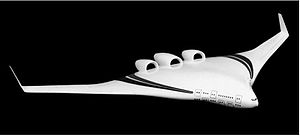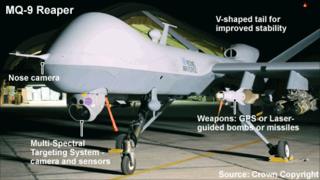Aircraft is a general term used in describing any machine capable of flying in the air. The term does not give regard to the design and sizes of the machine provided it made successful freight to the air. Some machines of this category had been referred to as air vehicles like the new EHANG flying vehicle.
The hot air balloons, helicopters, spaceships, airships, gliders, drones, modern flying vehicles and jet fighters, etc. are all under the category of the term “AIRCRAFTS”.
By definition, an aircraft is a machine carefully designed and produced to fly in the air and can be controlled.
Action which is possible by being able to overcome the gravitational resistance that exists on the earth surfaces and the atmosphere which is estimated to equal 9.8m/s2.
The aircraft gain support from their engine and/or air to counter gravity through static lift or dynamic lift of airfoil.
The overcoming of the gravitational force which is also called gravity is not an easy task since it exists to exact a pulling down effect on the earth surfaces, thereby making anything that goes up from the earth surfaces to comeback to it.
The gravitation force had been the major factor that made it impossible for any object that flies into the air to stay there because of the opposing force it exacts on the object, hence objects projected into the air will surely come down except there is a force that can overcome the gravity in it. This is the principle the birds use.
All the categories of aircraft can fly only when gravity has been overcome and other unseen forces such as the heavy wind storms in the air, etc. will be put into consideration when designing an aircraft which is why aircraft must have enough force to overcome any resistance to its movement in the air.
All the aircrafts categories have their own way of overcoming air resistance and the gravitational force based essentially on the aircrafts’ design and its propelling engines.
Hot air balloons are one of the first categories of aircrafts that have existed from the history of flying machines, though not propelled by an engine.
The balloon was lifted up from the ground and controlled in the air through the injection of hot air in them or gases that have less density or lightweight than the atmospheric air.
Based on the discovery that hot air and some gas like helium, hydrogen, and argon has lower density and weight than atmospheric air.
The balloons filled with any of such content was found to lift up from the ground and their control became addition or reduction of the hot air or gas quantity in the balloon while the forward and backward movement is made possible through wind direction.
Besides the balloon aircraft, other aircraft that had been existing afterward used a mechanized means to overcome the gravity and air resistance.
The good example is the airplanes and helicopters, the first uses wings with the engine or mechanized force to slide over the air resistance, while the latter uses direct upthrust force to lift itself up against the gravitational force and moves in the air through the opposing force created by the propelling engine.
The action of these two categories of aircraft had been fundamental in the development of every other aircraft that is existing today.
Sliding through the air with a streamlined body or wings assisted with a propelling engine or engines or moving upward and moving in any direction in the air based on the engine power which provides enough upthrust force to overcome any air resistance and gravity, had been the working principles of aircraft.
HISTORY OF AIRCRAFT
The history of aircraft started over two thousand years ago ranging from experimental kites to human pedaled air bicycles, fixing of wings by mountain climbers and jumpers to the modern day supersonic jets, and drones, etc.
The early development started hundreds of years BC when China became known for flying Kites. In the 15th century, Leonardo da Vinci made several designs meant to have possible flying objects but he did not produce any of the designed objects.
The discovery of hydrogen gas in the 18th century made the first human-made aircraft balloon to be possible, the balloon was called hydrogen balloons. Within that time, the hot-air balloon was also discovered.
These two balloons were in use for freight purposes for years but later redesigned to appear like the modern airplanes for air gliding or sliding effect which led to streamlining of the balloons shape an invention known today as airships.
Later in the 1930s, a new design of aircraft known as the flying boats were invented.
Piston engine propellers, hot-air, and light gases are the engines the new designs of the early aircraft were using some designs have the piston engines fixed in aircraft shaped balloons together.
The Second World War brought the existence of balloon aircraft to its less use and less popularity after the invention of jet engines and super internal combustion engines which can power heavier aircraft.
The invention changed the aviation method of using balloons to the modern method of speed aircraft in the form of airplanes and helicopters.
Helicopters and airplanes dominated the technologies used in fighting the Second World War for the purpose of the rescue operation, air strikes, launching of missiles and other missions.
TYPES OF AIRCRAFT
Aircraft may have the following categories based on their method of operation and working principle which are:
BALLOON AIRCRAFT: all the aircrafts using the balloon and powered by hot air, gases or engine can be classified in this category. Early flying balloons, spaceships and balloon-airplanes belong to this category.

HELICOPTERS: helicopters can be referred to as static lift aircraft. They have the ability to fly into the air without wings and streamlining design rather their blades rotation will provide the needed thrust for lifting and other movements in the air.
Under the two principles that aircraft use for lifting and flying in the air which is dynamic lifting and static lifting, all the flying machines using the static lifting method can be referred to as helicopter.
For example, the small drone called QUADROTOR was also referred to as QUADCOPTER because it has four rotors that provide static lifting.

AIRPLANES: airplane can also be called aeroplane or plane the name refers to all the aircraft that can fly into the air using a dynamic lift method.
The airplanes are known to have wings which help them to move upward once they start running forward with speed on a smooth ground, the adjustment and flexibility in the tail wings and main wings at the center will provide control of the airplane helping them to change their direction of freight to any desired location.
The engine or engines use to propel the airplanes forward could be internal combustion engines, electric motors, and jet engines, etc. the choice of the engine will be based on the size of the airplane and the intended speed.


ROCKETS: this is a special type of aircraft which does not use jet engine or internal combustion engines rather the rocket operates with a special engine known as the rocket engine. It is a kind of explosion method of providing thrust.
Rocket engine or engines attached to the entire body called rocket will use a static lifting method to lift the rocket from the ground with extreme explosive force.
The rocket engines work with the principle of a continuous explosion of gases passing through nozzles to build up pressures, the engine combustion and explosion system occurs very fast that the time intervals become unnoticeable.
Rockets do not use wings like the airplanes, and they do not use rotating blades like the helicopters but they have round body streamlining features to give them less air resistance.
This type of aircraft has dominated the aircraft in the space industries and the aircraft of some military in the world, because of their known speed in movement.
The rocket has been said to work more effectively in the space than in the atmosphere. The modern missiles and their launching are made possible through the rockets. Modern spaceships and super-fast jets were built with rocket engines.


COMPARISON BETWEEN HELICOPTERS AND AIRPLANES
- The airplanes are known for speed and ability to carry heavy loads into the air with fewer momentum engines fixed on them, unlike the helicopters which require large momentum engines like turbines or diesel engines which will also have extreme speed.
- Airplanes have wings for lifting and control some models have the engines attached to the wings or fixed at the front of the airplane bot helicopters use their engines for lifting and the blades adjustment provide the control, their engines are usually fixed to face upward creating enough space for the blade to rotate and provide the thrust needed.
- Airplanes are streamlined to slide in the air helping their weight to be sustained by the wings and body shape the two provides very low air resistance to the airplane. While helicopters do not use wings or streamlining feature to sustain their weight or slide in the air.
- If a clash or an engine failure occurs in the airplane, it will fall down through a slow and steady deceleration in a projectile method, while in the case of helicopter it will fall down directly from the up.
- Helicopter lands in a helipad which is small and easy to set up and can also land in any other place which made it useful for mobility, private uses, and monitoring jobs. While planes will need a landing and taking off space which needs to be smooth and long like the airports but small planes had been seen to land and take off in places like the football fields and less busy tared roads.
HOW DOES AIRCRAFT WORK? (THE WORKING PRINCIPLES OF AIRCRAFT)
The working principle of aircraft had been said in the introduction and is based on the fact that any machine capable of overcoming gravitational force known as the force of gravity usually rated theoretically as 9.8m/S2 can fly in the air. The way a machine achieved that is not a problem but the fact remains that it must overcome gravity to be able to be in the air.
This implies that any machine built for the purpose of flying in the air and is not able to achieve that has not overcome gravitational force.
Overcoming the force has no specification of engine size, machine design, or shape of the machine rather it all go down to theoretical calculations in regard to the producer’s size of engine, shape, and the overall design.
Small aircraft may not be able to fly or be sustained in the air while big aircraft may achieve that, it is a matter of calculations and proper designing.
AIRCRAFT DESIGN CONSIDERATION AND MANUFACTURING PROCESS
- When planning to produce an aircraft there are many considerations in regard to the design, type of the aircraft and the intended use, etc.
- The production of aircraft will start from paper works in the form of drawings to all the calculations needed.
- The data obtained from the calculations are used to decide the size and type of engine to be used.
- The calculations will also provide the possible weight the aircraft should have and the maximum loads it can carry and such will be used to determine the kind of material to be uses in building its body and skeletons and the supposed engine weight.
- Calculations will also reveal if the intended shape can be used or if streamlining will be needed, bearing in mind that good design means less size of the engine and more efficient aircraft.
- The intended use of the aircraft will determine if it can be a helicopter, airplane, rocket, or balloon, it is a serious consideration.
- All the listed considerations are focused on reducing cost and improving efficiency.
AIRCRAFT CONTROL SYSTEMS
Control had been a major issue to the aircraft especially the modern super-fast aircraft. Helicopters can be controlled through their blades’ raising and lowering mechanism and the tail blade helps to provide stability and quick turning.
Airplanes can be controlled with their wings, the tail wings movement causes the airplanes’ directional turning, and the wide center wings movement will cause the lifting and landing operations of the airplanes.
Balloon aircraft turning effects can be controlled by wind direction using a pedal design or solid frame and the adding or reducing of the gases or the hot air in the balloon for lifting and lowering operations.
The control of the three types mentioned above seem to be easier when compared to the rocket control, rocket control system is gradual and slower than all the above three types due to the high speed and the same is with other fast moving machines powered by jet engines and rocket engines.
SAFETY ASPECTS OF AIRCRAFT
The balloon aircraft can be said to be the safest but they have the disadvantage of very low speed if technical issues develop the aircraft can slowly land itself somewhere without any serious injury to those in it.
The next safer aircraft can be the airplanes with the advantage of high speed and wide wings they can move in the air with a sliding or gliding effect to overcome air resistance.
The wings provide a substantial support in suspending the body in the air helping the airplane to have a diving landing in the case of any technical failure or clash, such will help to reduce casualty to the people it if the aeroplane lands successfully in a plane ground but that will not be the case if it is heavy and landed with speed.
Some small airplane has parachute in them usually located at the top which acts as an alternative for emergency or accidental landing.
The rockets and all the super-fast aircraft as an improved technology used recently for important missions like the space research and military strikes they are yet to make serious records regarding accidents and technical/mechanical failures.
The considerations used when building them had contributed to the low accident records.
However, in the event of a foreseen accident, clash, or approaching bomb, etc. many of them have automatic ejection technology that helps their pilots and crew to be ejected into the air with the parachutes attached to their body just by pressing a button, thus making them the safest category of aircraft.
Few accidents had been recorded so far in regard to rockets and super-fast jets use by the military and the space research institutes if compared to the number of accidents recorded for airplanes.
Some of this type of aircraft has parachute installed in them for a safe landing in the case of engine failure or lack of fuel.
The helicopters have a higher risk when compared to others which are based on their design and working principle.
As a static lift method aircrafts, they do not use wings which could aid in air resistance if any fall occur and most of them have no parachute support. Except a helicopter falls inside a water, otherwise; it will leave serious casualty or fatality if it falls on a ground.
Those who board helicopters do wear a personal parachute or swimming vest if the helicopter will be flying over a water parts, to make emergency escape in the case of such incident, parachutes are used when the helicopter will be flying over the solid ground and helps to make a quick escape in the case of a fall.
PROBLEMS OF AIRCRAFT
There are problems usually seen in aircraft and problems which affect the aircraft’s operations especially the modern helicopters, rockets, and airplanes such are listed below:
NOISE: IC engines, jet engines, and rocket engines do cause serious noise in any aircraft using them such that the pilots will always wear ear muff or ear plug.
CLASH: from the history of engine propelled aircraft clash had been a major problem and the factors that can cause it are many ranging from lack of control by a pilot, windstorm, engine failure, to broken wing or parts. Airplanes have a higher record of air clashes than others.
FATIGUE: fatigue in NDT inspection term is an invisible weakness of materials especially metals which will lead to internal invisible injuries and failure of the material that can only be discovered through NDT inspection methods like the radiographic and magnetic methods.
Most plane clashes whose causes are unknown had been attributed to the fatigues in the plane which were not detected earlier.
Aircraft deteriorate from their external body to the internal components over time. Whenever fatigue is detected and found to be serious the aircraft is usually discharged from the duty to avoid the possibility of a clash if it goes into the air to face the air resistance.
ENGINE FAILURE: No aircraft can have 100% safety in it, sometimes issues of engine failure can occur even when proper maintenance was done on it. Engine failures may have contributed to over 50% of all the aircraft clashes in the world.
LOSS OF SIGNAL: during freight aircraft operators known as pilots need regular communication to obtain needed information as they are advancing to their destination and such information can include the road map, weather conditions, and landing space authorization, etc. Loss of signal is a particular problem associated with aircraft and has the potential of creating conditions for a clash.
FUTURE AIRCRAFT DESIGNS
Predictions had been made on the possibility of future commercial aircraft becoming remotely controlled or programmable, which will make them become self-piloted aircraft. The research and development to this prediction have already begun.
